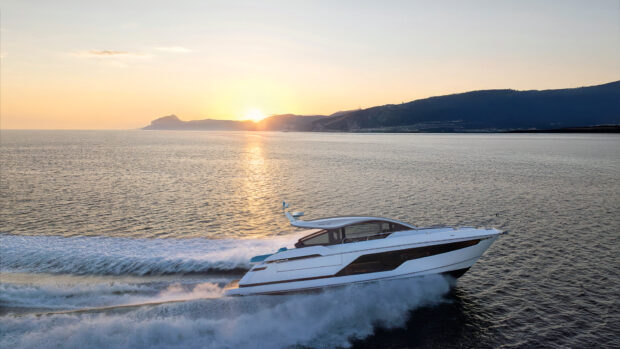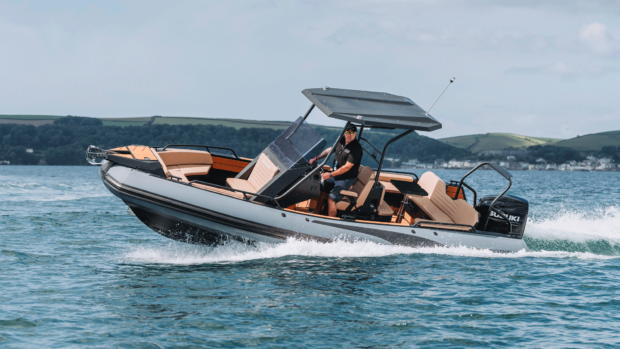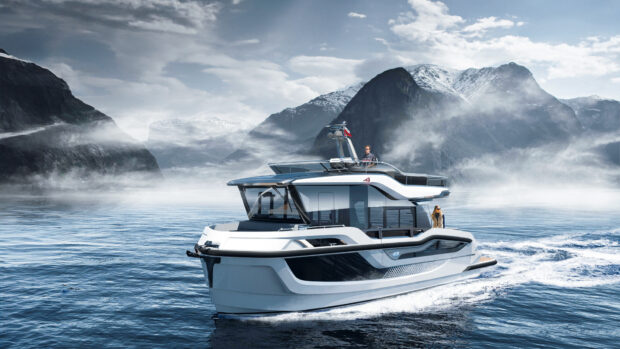The crew of Egret are in the grip of heavy seas and hastily trying to plot a safe anchorage for Pitcairn Island
Scott (YT) and Mary Flanders (MS) left Gibraltar on 16 September 2006, and we’ll be following their journey every step of the way, thanks to this unique online “blog”. For a complete list of all the couple’s blog entries click here
The crew of Egret are in the grip of heavy seas and hastily trying to plot a safe anchorage for Pitcairn Island
Tuesday 13 May
Well, mis amigos, rock and roll it is. Geesh. Monday through to early morning Tuesday we had largish swells from the SE that kept the cockpit awash with sea water. Not good. Plus we had water jetting in through the hawse holes on the sides of the cockpit. So no fishing and we didn’t get much sleep, but in spite of everything MS put out three great meals. We even broke our dry ship under way tradition last night and had a glass of beer.
The water is warm, something we haven’t experienced since Brazil, with flying fish and lots of birds. I can smell fish out there but fishing is not to be for a while, judging from OMNI Bob’s report. OMNI Bob’s report gives average wave heights. Anyone who has been to sea knows there are RBG (really big guys) that roll through from time to time, usually in sets of three. Looking back at these RGBs yesterday it was really impressive.
Because of heavier seas we raised the RPMs from 1350 to 1450 and saw an increase in speed without a drop in fuel mileage. The past five hours we have been averaging around 6.4 knots, putting miles in the bank that we will spend when the anticipated head seas kick in later today. We are trying very hard to make a comfortable daylight arrival at Pitcairn Island so we can at least make contact with the locals. Looking at the weather it doesn’t look like we will be able to anchor for the night so Wednesday afternoon contact is important. If not we will have to jog around the island all night in building seas to ensure we meet the Pitcairn folks, all 60 of them.
Unfortunately Pitcairn is a tiny rock in the middle of the ocean with no good anchorages. A small percentage of the very small number of boats that stop by each year manage to anchor.
In previous years only one or two boats made the trek. With more Chilean boats now there are perhaps 8 to 10 boats that stop by on their way west to the Gambiers or Australs, and on to Tuamotus, Tahiti and so on. If you have any interest in making this trip it would pay to look up the locations on a world map or atlas to see just where abouts in the world we are talking about. You will also be able to see the more traditional route from the west coast of America or Mexico, west to the Marquesas, Tuamotu Islands and then on to Tahiti.
Tuesday afternoon
The winds have died a little and the seas have moved almost directly behind the transom. They are still fairly large but not an issue. We now have two worms working, which are driving the birds crazy. The birds are swooping, diving and walking on water trying to figure these terminator baits out. Plus our speed has moved into the 6.4-6.6 knot range consistently until the predicted wind shift comes this evening.
Tuesday evening
So far our good fortune has kept up. Our speed is still up and the ride is comfortable. Wind is in the 12-15 knot range and Frank caught a fish, a nice 10lb tunny that we released. This fish is a bit strong for our taste but the different cruising guides tell us this is the same fish they sell in Papeete, Tahiti. If we catch any tomorrow before we reach Pitcairn we’ll save them for the locals. Pitcairn may be surrounded by water but there is only one single steel lifeboat/launch for the whole island. There are no local fishing boats.
Wednesday 14 May am
Before daybreak. The following seas continue as does our speed but the wind is slowly swinging to the N as predicted by OMNI Bob. Frank has just about worn out our hand-held calculator (it’s a good thing it’s partially solar powered) figuring out our ETA at Bounty Bay along with wild and crazy anchoring schemes.
In his last email our son said, “let me know when you dock”. So, let’s put things in perspective. We are in 2.5m seas with RBGs every now and then. Pitcairn Island is a rock in the middle of all this. There are no white sand beaches with palm trees to absorb the waves, instead there are refractive cliffs that return a confused chop. The anchorage in Bounty Bay is 1/2 mile offshore and open to any quadrant of north or wave wrap with any appreciable wind from protected directions, along with residual wave wrap from previous winds. The bottom is sand mixed with coral.
With all this in mind we will do our best, as safely as possible.
So there you have it. You know what we know. Pitcairn is next and we can’t wait.
P.S. OMNI Bob has been remarkably accurate in his forecasting, although we wish this time he was a bit off. This is a perfect example of the extra margin of safety in professional weather forecasting.
Let’s say we are anchored comfortably off Bounty Bay and the wind swings to the north with a 30 knot front putting us on a lee shore (it always happens at night when it is important). So now we are on a lee shore in rapidly building seas, the anchor chain has a distinct possibility of being fuelled by coral, seas are really big now, up and down on the anchor and there is no give way. There is a major cluster so we dump the chain and anchor and get under way. Weather forecasting helps us make intelligent decisions rather than just going for it and taking a chance.
We will be putting up some new pictures in a day or two of our trip from Talcuhuano Bay (mainland Chile) to Robinson Crusoe Island so keep checking back here.









